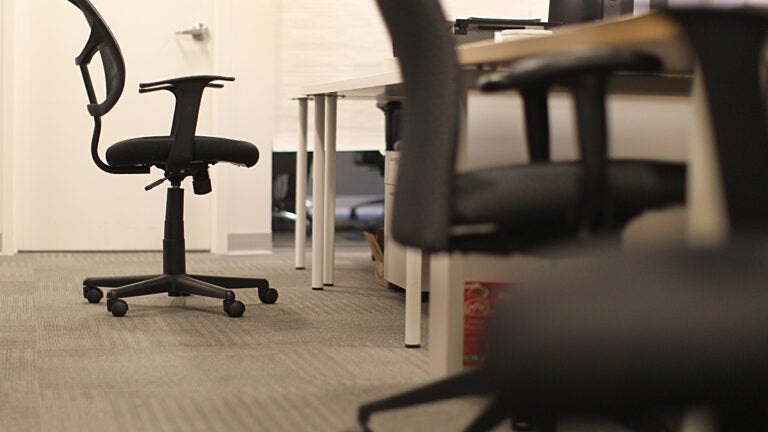
Just 1 to 2 days in office per week is most effective
Regional
“We identified that [the] group which spent amongst 23 and 40 per cent in the physical office environment, they did the very best.”

-
Improvements to how we do the job are right here to remain. A new report displays how Mass. wants to improve with them.
-
Thank God it is … Wednesday? Hybrid get the job done is scrambling the days as we understood them.
A new study from Harvard Enterprise University implies that when it will come to hybrid get the job done, just a single to two times in the business office, on a flexible timetable, produces the ideal outcomes for workforce and organizations alike.
The examine, executed for nine weeks in excess of the summer of 2020, analyzed the operate of persons at an group headquartered in Bangladesh, the review explained.
For the duration of that period of time, distinct teams of staff members were assigned different levels of operating from home and in the business office – superior work from property, which can make for about to 23 p.c of the time in the business, intermediate, which intended 23 to 40 per cent of the time in the office environment, and reduced do the job from residence, which intended greater than 40 percent of the time in the business office, according to the study.
“What we had been able to do was to use slicing-edge equipment techniques to gauge the novelty of their get the job done products,” Prithwiraj Choudhury, an affiliate professor of organization administration at Harvard Small business College, stated in a the latest interview with Boston.com. The technological know-how was ready to gauge some get the job done goods towards other, equivalent ones, these kinds of as approach presentations compared to other approach presentations.
“We uncovered that that intermediate group, which expended concerning 23 and 40 per cent in the physical business office, they did the greatest,” Choudhury explained, “That translated to around one particular to two days a 7 days in the place of work.”
The research found that not only ended up the staff creating a lot more perform products, they also confirmed “greater pleasure,” and “less isolation,” according to Choudhury.
“Intermediate hybrid, in my impression, presents employees flexibility, but makes certain that persons aren’t experience isolated,” he mentioned.
But that doesn’t mean that the hybrid schedule ought to be stringent. It should be adaptable and be still left up to just about every workforce to make your mind up when they’re heading to be in the place of work, the review found.
That could be a particular amount of money of times each individual week, or probably a sure 7 days out of the month, Choudhury stated. The crucial is that people on the exact same staff must be in the place of work at the similar time – having independent hybrid schedules for men and women on the same workforce is “counterproductive.”
“My vision of hybrid is a single that is adaptable,” he mentioned. “One that is not rigid, so I never like the three/two product [three days a week in the office, two days a week at home].”
Much more experiments need to be executed to confirm what this study observed, Choudhury claimed.
“As prolonged as a entire group can be collectively, they’re heading to be a lot more efficient,” he stated. “That’s what we contact flexible.”
When individuals are in the place of work, it really should be significant time, in accordance to Choudhury, noting that workplaces really should be reworked to inspire this.
“When you go to the office, there is an opportunity to interact with colleagues, and mentors, and have meaningful social interactions,” he explained.
Publication Signup
Remain up to day on all the hottest information from Boston.com
